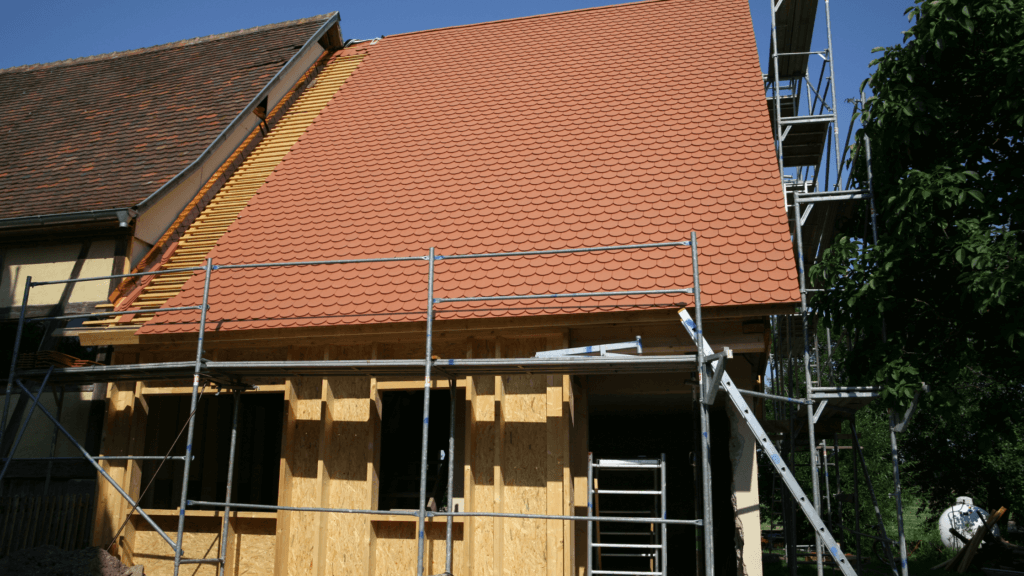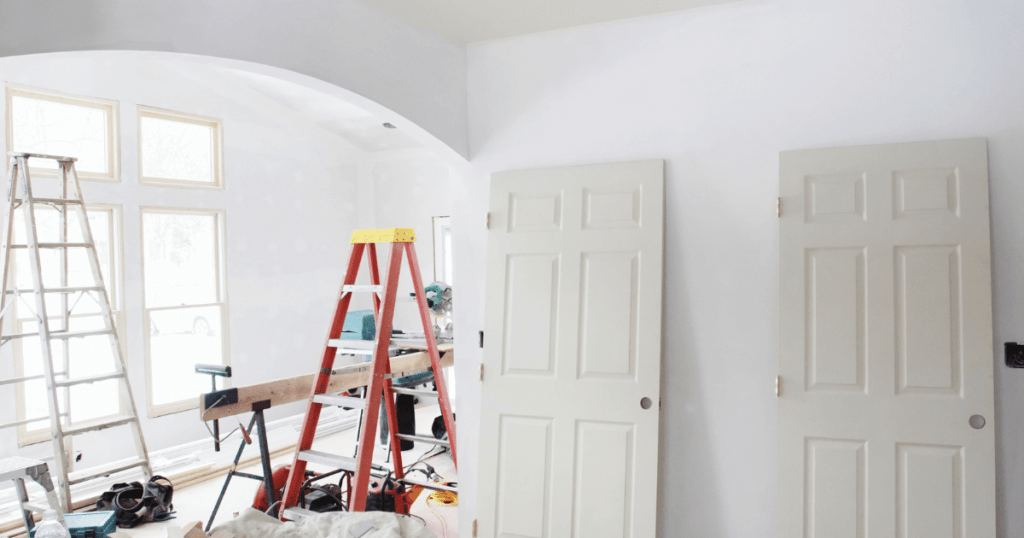Do you feel like you’re running out of room at home? Maybe you and your family have spent too much time in close quarters over the previous year, you’re expecting a new member, or you just need a dedicated workspace or more room to indulge in your favorite pastimes. Adding on to your home is the best alternative if you don’t want to uproot your family and start over. What is the procedure? How can you ensure that your house expansion goes smoothly?
In this article, we’ll go through the process of room addition to your house, including how to make sure it complies with zoning laws, what to think about before breaking ground, and how to set aside money for the endeavor.
Home Addition: A better way to enhance your place!
Adding on to your house is a great way to improve both its value and living space. Options such as a room over the garage, dormer, bump out, or second-story extension to the main home should be considered. No matter how big or little your house is, adding on is always a good idea. If you’re planning on selling your property shortly, adding square footage will make it more appealing to buyers. Think about what you’re looking for, take a stroll around the block, and consult your builder for ideas. Read on to find out why adding on to your house is the best way to upgrade it.
Home Addition: Before You Start-
Many homeowners have considered adding on to their homes but have no idea where to begin. They may have heard good things about house additions from their friends and neighbors and wish to replicate that success. They have no idea who to talk to or where to even begin looking. Getting in touch with a contractor on Fairmarket is the simple first step. Consulting with a contract ensures that all needs are met before work begins. Your builder is responsible for researching zoning and construction laws in your area. Once the project is complete, the county assessor can review the design plans and the finished product.
How Much Money Do I Need to Add to My House?
Before contacting a contractor, you may find out on your own how much your proposed home addition could cost. You may get a ballpark figure by looking up comparable projects in the region. After acquiring a ballpark figure, the next step is to schedule appointments with potential contractors.
The cost of a house extension will vary from job to job. It’s possible to spend between $100,000 and $500,000 for a two-story addition while spending between $10,000 and $30,000 on a sunroom extension. If you want to know how much money the job will cost, you should go to a skilled contractor. Local zoning laws, the scope of the project, the design, the home addition design software or labor, and the building materials all need to be factored into the final cost estimate.
You may save up the money for the extension, apply for a loan, or do both.
How to Build a Home Addition
1. Figure Out Costs and Objectives:
Extensive planning and an accurate assessment of the scope of the work are the foundations of any successful room expansion project. An addition to a home requires the same planning, financing, permit acquisition, construction management, and finishing touches as the original home.
2. Safeguard Money:
Few homeowners can afford to add a whole room to their house out of pocket. A loan or line of credit is necessary as a result. To do this, most people take out a loan, second mortgage, or line of credit against their home’s equity (the difference between the home’s current market value and the amount still owed on any mortgages or other loans on the property).
The 80-85 percent rule is a general guideline that banks and other lenders are hesitant to lend to homeowners who still owe more than the worth of their property.
Most banks won’t lend you more than 85 percent of the value of your property if you apply for a second mortgage or home equity loan and are approved for it. If your property is now appraised at $500,000, but you only owe $250,000 on your mortgage, many banks will be ready to lend you an extra $212,000 (85% of $250,000) to finish a big room addition if it will increase your home’s worth significantly. A homeowner’s ability to get a loan is contingent on their credit score.
Borrowing against the value of a retirement account or life insurance policy are two alternatives to traditional bank loans. However, taking on such debt should only be attempted after thorough consideration and the input of a financial expert.
3. Select a General Contractor:
The majority of homeowners will agree that hiring a GC to finish a room expansion is the best option. The GC may use a core group of general carpenters to carry out the bulk of the work, but they will also likely bring in several specialty subcontractors to handle things like plumbing, electrical, and HVAC installations. You’ll be paying the general contractor (GC) directly in installments, and he’ll be responsible for paying and supervising all of the workers on his team and any subcontractors he brings in to help get the job done.
Finding a reliable contractor with whom you can collaborate is crucial, so don’t rush into hiring a general contractor. Find out what other people in your area think. If they are unable to suggest a builder, get over your timidity and start knocking on the doors of people who have just had extensions built onto their homes.
You can’t put too much stock in the contractor’s role. Unless you have extensive training and time on your hands, this is probably too big of a project for you to handle on your own. The scope of the project, the contractor’s expected timeline, general design concerns, and potential cost-cutting measures should all be discussed at your initial meeting with potential contractors.
Inquire early on with the contractor about potential methods of keeping expenses down. The general contractor’s profit on your project is usually between 10 and 20 percent of the entire bid, so you have every right to bargain hard. If you want a lower price, this is the moment to offer to do part of the finishing work yourself.
A payment plan should be included in the contract you and the general contractor sign before work begins. Payment schedules can be determined at the discretion of the parties involved. When a general contractor requests more than half the entire cost upfront, that’s usually a red flag. In certain jurisdictions, it is illegal for contractors to request more than a third of the entire price of the contract as a down payment. A contractor may be financially precarious if he or she demands a large portion of the whole fee upfront.
Common practice is for two or three equal payments to be paid at significant points in the project’s progression. You should be able to hold back a sizeable sum of money (say, 10–25% of the total cost) until you do a final walkthrough of the project and verify your satisfaction.
4. Consult an Architect: (if Necessary)
Although some home builders may be able to help you with the design of your extension or even use stock building designs, it is usually advisable to engage an architect. If the contractor can recommend a good architect, it’s probably in everyone’s best interest to hire them. If you’re thinking about going this route, though, you need to do your homework and make sure the architect is competent and not simply a GC’s pal.
The term “design-build contractor” is sometimes heard when people are looking for a builder. Contractors that specialize in both design and construction have been around for quite some time. Simply said, a design-build contractor is a general contractor who chooses not to hire an architect. The design-builder may not hire an outside architect but instead use in-house design resources.
Although design-build firms promote themselves as turnkey operations, using such a firm is not without its drawbacks. While some design-build firms are excellent, some are less than stellar. Investigate the design-build firm’s previous projects for many clients if you’re thinking about employing them.
5. Get the necessary permissions and set up your shop:
Permits will be obtained, and once they are, your contractor will be required to display them prominently on your premises. A team will provide a portable toilet and may also erect a sign announcing the name of the firm responsible for constructing your extension.
Heavy earthmoving machinery may be brought in to clear the area and make it flat and ready for construction. We will clear the area of any obstacles, including trees if necessary. The fencing around the area will be removed so that large machinery can be brought in.
Don’t be alarmed by the drastic alterations being made to your property. Such earthwork will facilitate the building process, and finishing touches typically include extra earthmoving and contouring to return the environment to its pre-construction state.
6. Construct a Solid Base:
A full-scale foundation is often laid for room extensions, just as it would be for a new home. The crew will start by excavating a crawl space or basement, laying a concrete slab, and finally constructing the foundation walls and footers.
Typically, the general contractor will employ a subcontractor who specializes in foundation work; this is the same group that will handle the initial site preparation. The process of digging, pouring, and curing the foundation might take several days, after which the frame crew can begin their job.
7. Establish the Foundation:
Floors, walls and the roof are framed as soon as the foundation concrete is hardened. When a big, skilled team executes the task, progress may be made at a very rapid pace. After a long day at the office, you return home to discover the complete framework already in place.
Some construction projects are “stick-built,” meaning that the framing team manually erects the floor platforms, stud walls, and roof rafters before covering the structure. Some components are often constructed elsewhere and then sent to the site in huge sections for assembly. For example, it is currently routine practice to construct roof trusses elsewhere and have them craned into place. However, in other instances, the framed walls themselves are produced off-site, which can greatly accelerate the structural framing process.
Carpenters are often either full-time employees of the general contractor who work on the structural framing, or contract workers who are brought in as needed.
Due to the critical necessity to get the building encased to protect it from the elements, framing is typically completed in a matter of days.
8. Sheathing and roofing must be added:
Following the framework, the next steps are to install the sheathing for the walls and roof, then the house wrap, roofing paper, and finally the shingles. The plan is to make the building more resistant to the elements so that the workers may continue their tasks inside. Even while shingles and other roofing materials are often put by a specialized subcontractor, the sheathing for the walls and roof is typically built by the same team that conducts the basic framework.
House wrap, also known as fiberglass film, is typically applied over OSB (Oriented Strand Board) panels that are used to sheath walls in modern construction. Although OSB and other materials are occasionally used, plywood panels remain the industry standard for roof decking.
When the roof is installed, shingles or another finishing roofing material is placed on it. Together with the new windows and doors, this keeps the building dry and makes it possible to take your time finishing up the interior.
The completion of the roofing gives the impression of rapid progress, but what comes next might drag on for months.
9. Set up Glass and Door Frames:
After the roof is replaced, the windows and doors can be replaced as well. This seals the building up and makes sure it stays dry till further work is done on it. After this point, the interior of the structure is considered to have “dried-in” by construction professionals.
The windows and doors used in a room extension are typically factory-standard items. Common carpenters shouldn’t have any trouble putting these in.
10. Finish the Electrical, Plumbing, and HVAC Rough-Ins:
Electrical, plumbing, and HVAC systems are “roughed-in,” which means the behind-the-scenes features like pipes, wiring, and ductwork are installed while the walls, floors, and ceilings are still in their raw framed form.
Subcontractors like electricians, plumbers, and HVAC professionals might temporarily hold down a construction project, but they usually only take a day or two to do their assigned tasks. Waiting for city inspectors to assess and authorize the construction is typically when delays occur. Before continuing with any work on the walls, floors, or ceilings, it is necessary to evaluate and authorize these systems.
11. Put in Drywall and Insulation:
After mechanical inspections are finished, the project will seem more like a genuine building once insulation and drywall are installed. Standard fiberglass batts, sprayed foam, and blown-in cellulose are just a few examples of the various insulation options available. Hanging the sheets, “mudding” the seams with wet drywall compound, waiting for the compound to dry, and finally sanding the seams are all steps in the process of drywalling.
General frame carpenters may do these tasks, but they can also hire subcontractors who focus on insulation and drywall installation. Workers may finish installing insulation and drywall in only a few days if they work diligently.
12. Finish the Interior:
The flooring and cabinets will be put in, and then the walls and ceiling will be painted. Either one can be done first, and the order is often determined by what comes first in the timetable. Trim work is easier to install after the walls have been painted, but painters are pros at painting after the final flooring has been down. Finish carpenters often handle painting and flooring for smaller projects, while these tasks may be outsourced to larger ones.
Finish carpenters are the specialists who install inside doors, baseboards, window trim, door trim, crown moldings, and other trim, while some regular carpenters can also handle finish work.
13. Establish Linkages to Lighting:
Plumbing, electrical, and HVAC professionals will return after the project to finish installing the remaining fixtures and making the final connections. Some of these tasks may be performed in tandem with the interior finishing.
Subcontractors for mechanical systems are in high demand, thus delays are frequent at this point. However, if authorized by local regulations, the general contractor may have his or her staff carry out much of the final connecting work.
14. Finish the Gardening:
The home’s interior is nearly finished, and the landscaping that had to be uprooted to provide construction access has been restored. In the future, landscaping contractors may come to plant trees and shrubs and repair the lawn, and earthmoving equipment may return to backfill around the foundation and level and shape the yard.
While the general contractor usually oversees the earthwork, the homeowner may hire a different company to do the landscaping. Others choose to undertake the landscaping and grass reseeding themselves.
15. Finish the Stitch-Up List:
A punch list is a checklist of final, incomplete tasks. Many of them are fine-tuning details that got put on hold because of other tasks or were overlooked entirely. The contractor and the homeowners will often each make their checklist, which will then be combined into one document.
After the final walkthrough has been completed and the punch list items have been addressed, the general contractor will send an invoice to the homeowner for the remaining balance.
The payment plan from the homeowner to the general contractor can be structured in a variety of ways but often involves a sizable downpayment before any work is done, followed by one or two payments at predetermined stages of the project. Payment in full is usually not made until after the homeowner and contractor have completed their final walkthrough and everything on the punch list has been addressed.
Remodeling your home? Call the professionals at Dreamprint!
Get in touch with Dreamprint Home Remodeling if you’re considering a home expansion. The sooner you establish contact with a contractor, even if work isn’t scheduled to begin for a few months, the better. When you’re ready to begin construction, your contractor may start preparing the necessary paperwork, obtaining the necessary building codes, and more. A home extension is a fantastic option for anyone looking to increase their living space and resale value. Get in touch with a local Dramprint home remodeling expert now!
Frequently Asked Questions
What do I need to know before constructing a home addition?
Finding the answers to these two questions will help you balance the benefits and drawbacks of adding an extension before you ever approach contractors. Will the value of your home increase with this addition? The assessment, resale value, and return on investment of your home may be affected by any additions you make, even if you have no immediate plans to sell. Is your proposed expansion subject to any zoning regulations? Your property boundaries may prevent you from expanding outward even when your community discourages vertical growth.
Is it more cost-effective to expand on vertically or laterally?
To save money, try expanding upwards instead of outwards. Framing materials and manpower are needed for vertical construction. Unless it’s a bump out, excavating, laying a foundation, and landscaping are all necessary for an expansion. Finishing the basement, attic, or garage is the cheapest method to expand your home since you won’t have to pay for a new foundation or roof.
Do I need building plans to add on?
Yes. You will need a blueprint, also known as a floor plan, to secure a construction permit from your local municipality.



